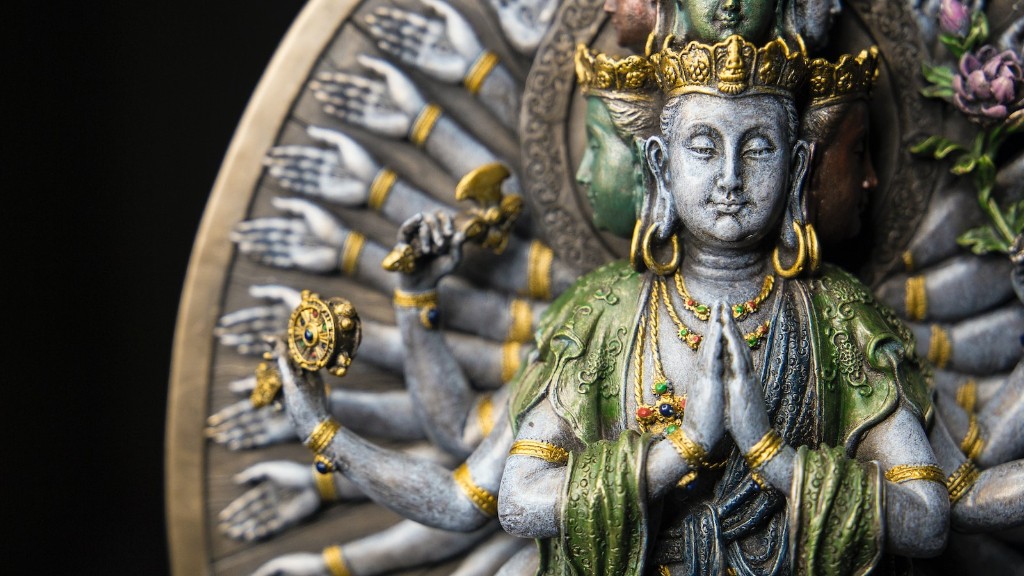Hinduism and yoga are inseparable. Since ancient times, they have been intertwined, with Hindu scripture providing philosophical foundations while yoga postures, breathing techniques and meditation practices provide physical and emotional benefits to practitioners. Yoga has become a popular discipline in the modern world, but its philosophy and practices were developed centuries ago by Hindu sages.
Though Hinduism is often practiced through ritualistic acts and worship, its sacred texts contains countless philosophical teachings that are open to interpretation. A key concept of Hinduism is that all aspects of the universe are interconnected and that the same spirit is within each living being. This idea forms a basis of yoga practice, which strives to connect the body and mind with a sense of greater cosmic awareness and understanding.
Hindu texts like the Upanishads and Bhagavad Gita contain some of yoga’s most fundamental teachings, and they serve as the foundation for many yogic principles. For instance, the Gita describes yogas such as Bhakti Yoga—the path of devotion—and Jnana Yoga—the path of wisdom. The famous yogic saying, “Yogas Chitta Vritti Nirodha,” is derived from the Upanishads and translates to “Yoga is the cessation of the fluctuations of the mind.”
Additionally, numerous Hindu gods and goddesses have been associated with aspects of yoga. The god Shiva is often seen as the divine yogi who is credited with creating the practice, and his consort, Parvati, is the embodiment of grace and beauty. Indra is the god of power and strength, and Ganesha—the “remover of obstacles” —is often seen in yogic postures. Other Hindu deities such as Brahma, Vishnu, and Lakshmi are also associated with aspects of yoga practice.
Hinduism also emphasizes the power of meditation, which is a pivotal part of yogic practice. Meditation is often seen as a way to experience the divine, and in Hinduism, meditation is seen as a powerful practice to access one’s true inner self. The famous mantra “Om,” which is often used during yoga postures, is derived from Hindu scripture and is said to represent the sound of the universe.
Though there are many paths to spiritual enlightenment, yoga is closely related to Hinduism. Hindu scriptures have shaped the development of modern yoga, and the practice has become a popular way to reach physical and mental balance. Both Hinduism and yoga emphasize self-study and a connection to the divine, and they are both powerful paths to achieving a deeper understanding of our place in the universe.
Bhakti Yoga
Bhakti Yoga is one of the most common forms of Hinduism, known as ‘the path of devotion.’ It is deeply connected to humanity’s love and devotion to God. Through prayer and meditation, practitioners open their hearts to worship and develop a close relationship with the Divine. The core concept of Bhakti Yoga is finding a connection with higher consciousness and loving devotion to God, which brings peace and joy to practitioners and allows them to live a life of purpose and meaning.
In Bhakti Yoga, practitioners are encouraged to chant mantras, sing hymns, and engage in various devotional practices. By living in harmony with the Divine and honoring one’s spirituality, practitioners experience a sense of love and connection to all things; they learn to recognize and nurture the divine force within themselves and others. Bhakti Yoga brings practitioners an inner calm and spiritual power, allowing them to live joyfully and fearlessly.
Bhakti Yoga has been practiced for centuries and is still an important part of Hinduism. In its purest form, it is a form of worship that is deeply connected to the heart and fills one’s life with peace, love, and joy. It is an empowering practice that will bring harmony to all aspects of life, from the physical to the spiritual. By embracing Bhakti Yoga, practitioners can find a deep connection to the Divine and experience true fulfillment.
The Nath Yogis
The Nath Yogis, otherwise known as the paramahansas, are a sect of Hinduism dedicated to understanding truth and attaining spiritual liberation. They are practitioners of hatha yoga and believe that the body must be purified and trained in order to realize one’s highest state. Through yogic practices and meditation, they seek to dissolve the ego, transcend duality, and live in service of the Divine.
The Naths combine the eight limbs of yoga, as described in the Yoga Sutras, with tantric practices, mantra recitation, and rituals. They often observe celibacy, keep strict diets, and wear special clothing. Many devote themselves to simplicity and lead hermit lives in remote locations. In this way, they devote themselves wholly to the yogic path and practice a lifestyle of restraint, purity, and self-discipline.
The Nath Yogis have inspired countless yogis, spiritual seekers, and even modern-day yoga teachers. Their commitment to transcendental meditation, spiritual pursuits, and disciplined self-control have allowed them to develop an understanding of reality that is not available to ordinary seekers. Their teachings offer genuine insight into the science of yoga and may help inspire spiritual seekers to reach higher states of consciousness.
Yoga and Ayurveda
Ayurveda and yoga are two ancient healing traditions that are closely intertwined. Both are rooted in the same Hindu philosophical tradition and strive to promote health and well-being. While yoga focuses on the physical aspects of health, Ayurveda focuses on the mental and spiritual aspects. Together, they offer a comprehensive approach to achieve physical, mental, and spiritual balance.
Ayurveda is a holistic health system that seeks to understand underlying causes and conditions of disease. It is based on the understanding that disease and health arise from imbalances in body, mind, and spirit. By understanding the individual’s unique physical, mental, and spiritual tendencies, practitioners of Ayurveda can create personalized treatments to restore balance, ultimately leading to health and happiness.
Yoga, on the other hand, focuses on physical postures, meditation, and controlled breathing to create a connection between body and mind. By calming the mind and harmonizing the body, yoga prepares practitioners for meditation, which allows for deeper-level healing to take place. By combining the two traditions, practitioners can develop a deeper awareness of themselves and unlock their full potential.
Ayurveda and yoga are two powerful traditions that have been practiced for centuries. Together, they offer a holistic approach to health and healing, providing practitioners with a deep understanding of body, mind, and spirit. By combining the teachings of both Ayurveda and yoga, practitioners can gain a deeper understanding of themselves and experience true wellbeing.
Yoga and Hinduism Around the World
In recent years, the practice of yoga has spread around the world, with practitioners of all backgrounds embracing its many benefits. It has become a popular form of exercise and a tool to promote overall health and wellbeing. However, yoga’s roots lie in Hinduism, with the aim of achieving spiritual enlightenment and a connection to the divine.
Today, many people practice yoga without necessarily connecting it to Hinduism. While yoga has become popular as a form of exercise, its deeper spiritual and philosophical teachings are often overlooked. Yet, these teachings form a basis for the practice and offer a path to understanding one’s true nature and finding peace within.
Yoga has become a staple in the modern world and is found in many countries around the globe. Hinduism, however, is different in that it is still widely practiced in its homeland of India, with many others taking up the philosophy for its spiritual and mental benefits. As yoga continues to gain popularity around the world, it is important to remember its philosophical roots in Hinduism and to understand the deeper meaning of the practice.
Impact Of Hinduism On Yoga
Hinduism has had an incredible impact on the development of yoga throughout the years. Its philosophical teachings form the basis of many yogic principles, and its many gods and goddesses have been associated with various aspects of yoga practice. Hindu scriptures provide countless teachings that are open to interpretation, and its sacred texts have shaped the practice of yoga as we know it today.
Hinduism has also contributed to the development of meditation, an important part of yoga practice. Meditation is a powerful way to experience the divine, and through meditation we can learn to recognize and nurture the divine force within ourselves and others. By embracing the teachings of Hinduism, yoga practitioners can gain a deeper understanding of their place in the universe and achieve true fulfilment.
Hinduism and yoga have been intertwined for centuries. Hindu teachings have been the basis for many yogic principles, and its many gods and goddesses have been associated with aspects of the practice. As Hinduism and yoga both emphasize self-study and a connection to the divine, they are both powerful paths for achieving a deeper understanding of our own nature and reaching spiritual enlightenment.


